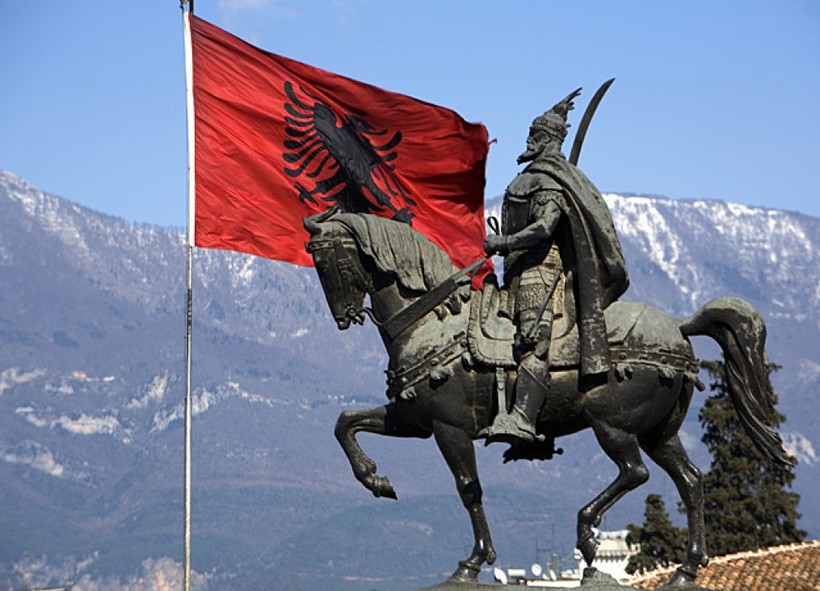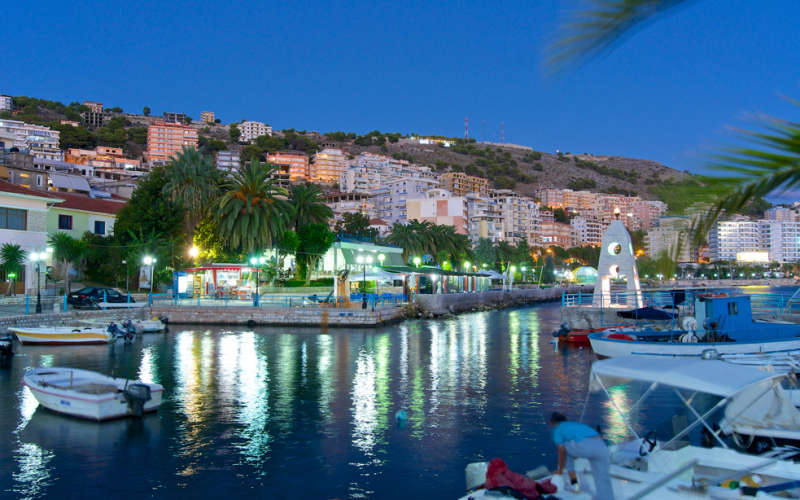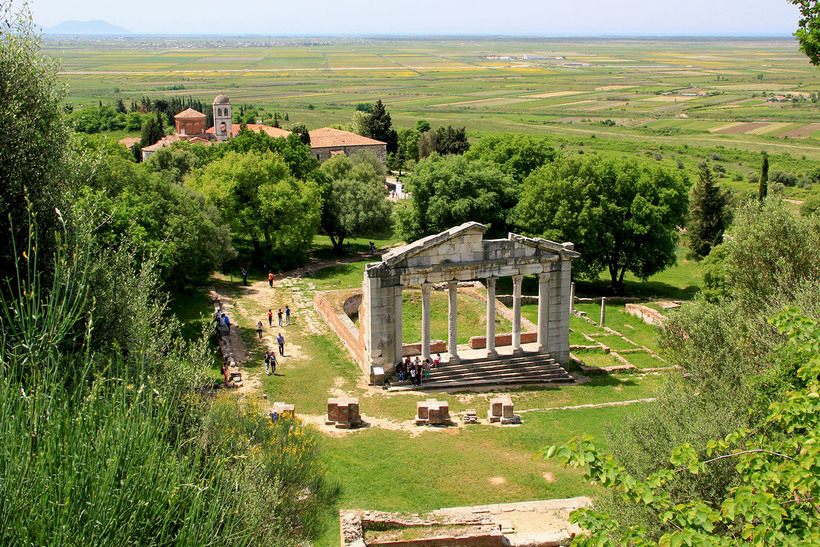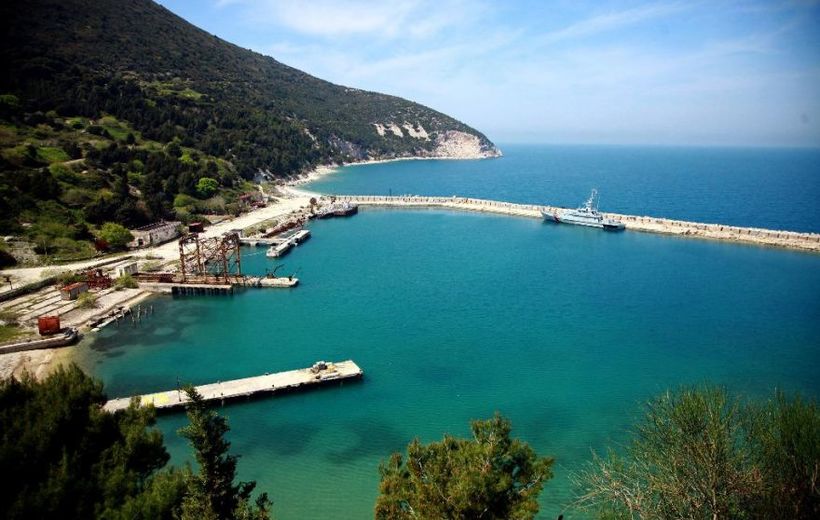Albania. More than a single country in Europe does not go so many myths, fears and conjectures. The first time I saw Albania from the top of a mountain in Macedonia, I imagined Muslims with wild eyes sitting in bunkers in ambush, with Kalashnikov over his shoulder, and even felt a chill running down my back. And then my Macedonian friend offered to ride through Albania to the sea and promised me exceptional beauty and safety. Surprisingly, it turned out that way. Albania is a completely distinctive and self-sufficient country with incredible nature. For a long time she was the most closed country in Europe, during which time many legends were born about her.
Today, Albanians have visa-free entry to Europe, build new roads, houses, cafes and restaurants, destroy bunkers – a legacy of the era of Khoja.
Not everything is still established, transport links with the country and within the country is a sore point, despite new roads being actively built. Many mountainous areas are in disrepair. The south of the country and the coast develop much faster than the rest of the territory, but every year Albania changes, it becomes more convenient and understandable for visiting tourists. In Albania, I always have the feeling that life around is being built and is actively transforming.
A variety of food, archaeological and nature reserves, incredible nature – the Albanian Alps, two seas at once – the Adriatic and Ionian, lakes and rivers and hospitable Albanians who are delighted with the guests, make Albania truly worth exploring and traveling through it.
How to get there
By plane
In Albania, there is one operating international airport named after Mother Teresa, located 17 km from the capital of Albania, Tirana.
Touristic Regions
Albania is divided into four tourist regions:
The central and northeastern part of the country, including the Albanian Alps. A lot of Europeans come here to hike along unpopulated trails and the coolness of mountain rivers and lakes. As a starting point for exploring these places, the city of Kukes is located near the border with Kosovo.
Adriatic coast. From the Vlora to the very border with Montenegro stretches the sandy beaches of the Adriatic. The sea is shallow at the entrance and warms up quickly, which is especially good for families with children. To the north of Durres there are few places with tourist infrastructure, but to the south you can find options for every taste.
The Ionian coast, the so-called Albanian Riviera, from Vlora to the border with Greece. There are rocky beaches, the sea and mountains are adjacent, and the color of water is all shades of blue and green. Small cozy towns and various attractions. Albanians themselves spend their holidays here, and the coast is actively developing.
The southeastern part of the country, including the coast of Lake Ohrid . The influence of neighboring Greece is felt right up to the lake. Many Christians live here, grow olive trees and delicious figs, beautiful nature and many ancient monuments. It’s good to travel to these places by car, as, indeed, throughout Albania.
I usually look for hotels on Booking – here , you can check if there is a better price somewhere.
Top cities
Albania is a small country, but very diverse. Both nature and historical sites will impress.
- Tirana is the capital of Albania. A small but pleasant center where a mosque and a church coexist in the main square, reflecting the essence of the attitude of Albanians towards religion. View of the city opens from the observation deck on Mount Dajti, where you can climb on a lift.
- Kruja is a small town located on the top of Sari Saltiki Mountain near Tirana. Albanians love and revere Kruja, there is a fortress and a museum of the national hero Skanderbeg. In Kruja, it’s very calm, people are unhurried, and beautiful views open from observation platforms.
- Berat. It is called the city of “thousands of windows” or “white city”. The historic center of Berat, along with the fortress, where people still live, was included in the UNESCO World Heritage List. There are many museums, including the Onufri Museum, which is most interesting to visit. Here you should try homemade dogwood brandy.
- Saranda is the pearl of the Albanian Riviera. A city located opposite the Greek island of Corfu. The clear sea and many attractions around. Butrinti Archaeological Museum-Reserve, Blue Eye Nature Reserve, and the most beautiful beaches of Albania in the town of Ksamil are half an hour away by car from Saranda.
- Vlora – the city itself will not impress, but it is here that the Adriatic and Ionian Seas meet and you can track how the color of the water and the seabed change. Vlora is an excellent base for visiting attractions in the area, for example, the Llogara Nature Reserve or Illyrian Apollonia.
The islands
Albania owns several small islands in the Ionian Sea. The islands are very small and basically they have nothing but vegetation.
On the largest summers, cafes are built and open airs are held. You can get on a free shuttle boat from the beach in the town of Ksamil, not far from Saranda, as well as on a rented catamaran or even swim.
Another island of Albania is Sazan. The island is part of the Vlora region. Previously, it housed a military base, which Sazan formally considered to this day. In 2015, the Albanian government announced big plans related to changing the status of the island and its improvement for tourists. While on Sazan there is no drinking water and it is closed to the public.
Top Attractions
Butrint is an archaeological museum in the south of the country. Surprisingly well-preserved building of the ancient Greeks, Romans, the construction of the Byzantine period, surrounded by beautiful nature.
2. The Blue Eye is a karst spring that spills deep from the ground. The Blue Eye is located in a large nature reserve near Saranda.
3. Apollonia Illyria is a once ancient Greek port in Illyria. Aristotle wrote about her, in her honor the asteroid 358 Apollonia was named. Apollonia is located near the town of Fier . For a visit it is better to choose a non-hot day, since most of the excavations are located in the open air and the scorching sun.
4. Berat. The White City, whose historic center is a UNESCO World Heritage Site. On the territory of the fortress of Berat, as many centuries ago, people still live. Here are unique museums and ancient churches.
5. Well-preserved ancient fortresses are found throughout Albania. One of the most interesting to visit is the Rozafa fortress in Shkodra, a city on the border with Montenegro, built by the Illyrians in the 3rd century BC.
Weather
Most of Albania has a temperate Mediterranean climate.
Closer to the coast, the temperature is higher and the air is drier. Winters are warm and mild; snow can rarely fall and melt immediately.
In the Northeast of the country, in the Albanian Alps, the climate is more continental, and in summer there is a lot of rainfall, and winters are cold and snowy.
The best time to travel around Albania is April-May or September-October.
The holiday season in Albania begins in May, and on September 1, all Albanians disappear from the coast and, despite the fine weather, the tourist infrastructure is gradually completing its work.
Only in the south of the country the holiday season lasts until mid-October.






















Customer
Your article helped me a lot, is there any more related content? Thanks!
Customer
Thanks for sharing. I read many of your blog posts, cool, your blog is very good.
Customer
Thank you for your sharing. I am worried that I lack creative ideas. It is your article that makes me full of hope. Thank you. But, I have a question, can you help me? https://www.binance.com/it/join?ref=S5H7X3LP
Customer
Thank you for your sharing. I am worried that I lack creative ideas. It is your article that makes me full of hope. Thank you. But, I have a question, can you help me?
Customer
Your point of view caught my eye and was very interesting. Thanks. I have a question for you.
Customer
Thank you for your sharing. I am worried that I lack creative ideas. It is your article that makes me full of hope. Thank you. But, I have a question, can you help me?
Customer
Thanks for sharing. I read many of your blog posts, cool, your blog is very good.
Customer
Your article helped me a lot, is there any more related content? Thanks!
Customer
Can you be more specific about the content of your article? After reading it, I still have some doubts. Hope you can help me.
Customer
Your article helped me a lot, is there any more related content? Thanks!
Customer
Your article helped me a lot, is there any more related content? Thanks!
Customer
I don’t think the title of your article matches the content lol. Just kidding, mainly because I had some doubts after reading the article.
Customer
Your article helped me a lot, is there any more related content? Thanks!
Customer
Your point of view caught my eye and was very interesting. Thanks. I have a question for you.
Customer
Can you be more specific about the content of your article? After reading it, I still have some doubts. Hope you can help me.
Customer
Your article helped me a lot, is there any more related content? Thanks! https://www.binance.com/pt-BR/join?ref=YY80CKRN
Customer
Thank you for your sharing. I am worried that I lack creative ideas. It is your article that makes me full of hope. Thank you. But, I have a question, can you help me?